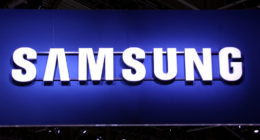As the ongoing coronavirus outbreak continues to take humanity into its grips, we are now beginning to see quantitative data on the financial impact of the pandemic. Two reports, one from Strategy Analytics and the other from Counterpoint research have come out with the impact on the smartphone industry. And the numbers pretty much corroborate the human impact of coronavirus outbreak, to say the least.
According to Strategy Analytics, the pandemic has led to the sales of smartphones experiencing their largest ever decline, since invention of these devices. Global shipments dropped by 38% to 61.8 million, from 99.2 million last year. February, which was set to be a big month for the industry marking the unveiling of new models, proved to be quite the opposite as sales dropped by 14%.
The outbreak has already caused over 21,000 deaths worldwide, with the number increasing at an alarmingly high pace. Infections are close to breaching half a million mark, amid a shift in the epidemic’s epicentre from China to the US and Europe. And even though China has reported fairly lower new infection numbers, and also announced an end to the lockdown, the 4 month lockdown has disrupted the supply and demand of most industries including electronics.
In case of smartphones, production was stopped due to the compulsory shutdown of factories to contain the pathogen. Companies were unable to procure key components for production as the supply chain remained non-functional. China, where the outbreak began, is the biggest supplier of electronic parts globally. The list includes components that are essential to the device such as battery, memory board, printed circuit board and display.
On the retail side, shipments plunged as people began to be quarantined by governments world over. Retailers began to shut down as markets grew empty as countries continued to completely shut their economies. Apple, the world’s largest smartphone maker, has shut down all stores outside China indefinitely. The company has recorded a sale of less than 500,000 smartphones in the Mainland China market in February. Samsung following the shutdown of its key factories in South Korea, also shut its stores. While Apple declared that it would miss its profit forecasts, Samsung reported a slow initial sale of its S20 models released in February. This chronology of events led to what is being called the smartphone market’s “biggest ever fall, historically”.
China is now slowly bouncing back with re-opened stores in mid-march. As people begin to go back to work, Apple has opened all its stores in the country. South Korea also seems to have ridden the wave.
However as outbreaks in other regions continue to worsen, smartphone shipments are expected to struggle throughout March. According to Jean Park a senior analyst at Counterpoint in the case of other regions “the worst in yet to come.”
Retailers may begin to offer generous discounts on bundles to make up for the dramatic drop in sales. The gloomy statistic owing to the pandemic is expected to affect the market long term. The economic slump has led to all smartphones across different price ranges taking the hit. Whereas some manufacturers seem to be responding by delaying product launches, Apple did release a new Ipad and a new Macbook. The reduced fanfare of a high-profile product is reflective of the pandemic and its effects.





